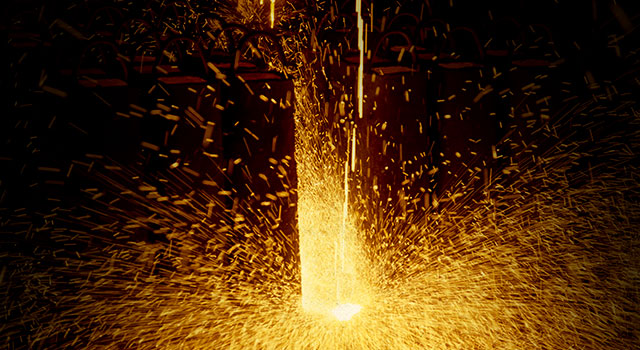Nickel is a hard, extended and ferromagnetic metal that is highly abrasive and corrosion-resistant. Nickel is a ferrophilic element. The melting point of 1455℃, the boiling point of 2730℃, the density of 8.90 g / cm 3, can be of electrical and thermal conductivity.
Nickel, the chemical symbol Ni, atomic number 28, atomic weight 58.69, belongs to a family of periodic families. Ancient Egyptian, Chinese and Babylonians all used meteorites with a high nickel content, while the brass produced in ancient Chinese Yunnan had a high content of nickel.
Nickel can slowly dissolve in dilute hydrochloric acid, dilute sulfuric acid, dilute nitric acid, but the surface passivation in smoky nitric acid. The oxidation state of nickel is-1, + 1, + 2, + 3, and + 4. Among the simple compounds, + 2-valence is the most stable, and + 3-valent nickel salt is used as the oxidant. The oxides of nickel are NiO and Ni2O3. Nickel hydroxide, Ni (OH) 2, is a strong alkali, slightly soluble in water, easily soluble in acid. Nickel sulfate (NiSO4) can form alum Ni (SO4) (2 · 6H2O) (MI) with alkali metal sulfate.+ 2 valent nickel ions can form coordinating compounds. Under pressure, nickel and carbon monoxide can form four-base nickel (Ni (CO) 4), and after heating, it will decompose into metal nickel and carbon monoxide.
Nickel is a silver-white metal, with magnetic properties and good plasticity. Good corrosion resistance, nickel almost silver white, hard and malleable and ferromagnetic metal elements, it can be highly polished and corrosion resistant. After dissolution in nitric acid, it is colored in green. It is mainly used in alloys (e. g., nickel-steel and nickel-silver) and is used as a catalyst (e. g., penny-nickel, especially as a catalyst for hydrogenation). With the highest nickel content in the core, it is a natural iron nickel metal alloy.
Nickel consumption is the largest in stainless steel applications, and two-thirds of the global primary nickel mines are used in stainless steel production. Stainless steel containing nickel can not only resist the corrosion of atmosphere, steam and water, but also resist the corrosion of acid, alkali and salt, so it is widely used in chemical industry, metallurgy, construction and other industries, such as making petrochemical industry, textile, light industry, nuclear energy and other industries requiring welding containers, towers, tanks, pipes and so on.
Function and application of nickel:
1. Because nickel has good corrosion resistance, it is often used in electroplating. Mainly used in alloy (formula) (e. g. nickel steel and nickel silver) and used as a catalyst (e. g. lane nickel, especially used as a catalyst for hydrogenation),
2. Can be used to make money, etc., plated on other metals to prevent rust. Mainly used to manufacture stainless steel and other corrosion-resistant alloys, such as nickel steel, nickel-chromium steel and a variety of non-ferrous metal alloy, nickel content of high copper-nickel alloy, it is not easy to corrosion.
3. Hydrogenation catalyst and compound preparation for ceramic products, special chemical vessels, electronic circuits, glass-bearing green and nickel compounds, etc. Electrolytic nickel is the nickel supported by the electrolytic method,
4. The stainless steel and various alloy steel made by it are widely used in aircraft, tanks, ships, radar, missiles, spacecraft and machines in the civil industry, ceramic pigments, permanent magnet materials, electronic remote control and other fields.
preparation method:
1. Electrolysis method. The enriched sulfide ore was baked into oxide, reduced with carbon to crude nickel, and then processed by electrolysis of pure metal nickel.
2. Base-chemical method. The sulfide ore of nickel is combined with carbon monoxide to form four-base nickel, heated after decomposition, and a high purity of metal nickel.
3. Hydrogen reduction method. Nickel oxide is reduced with hydrogen, or nickel metal is available.
4. Mix the oxygen into the blast furnace to replace the sulfur, and the nickel oxide can be obtained by heating the nickel ore. The oxide can produce nickel metal from the acid that reacts with iron.
5. After the ore is calcined into oxide, it is then reduced by water, gas or carbon to obtain nickel.

